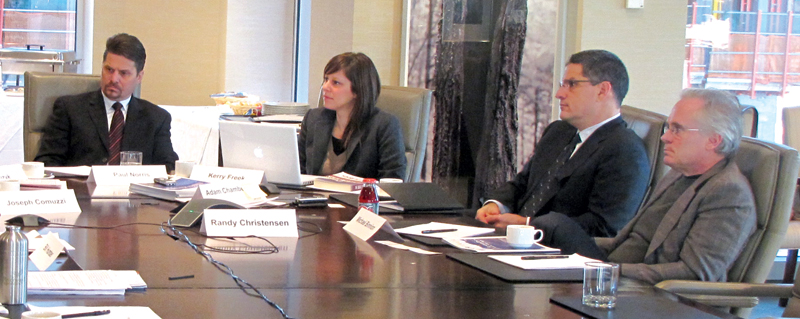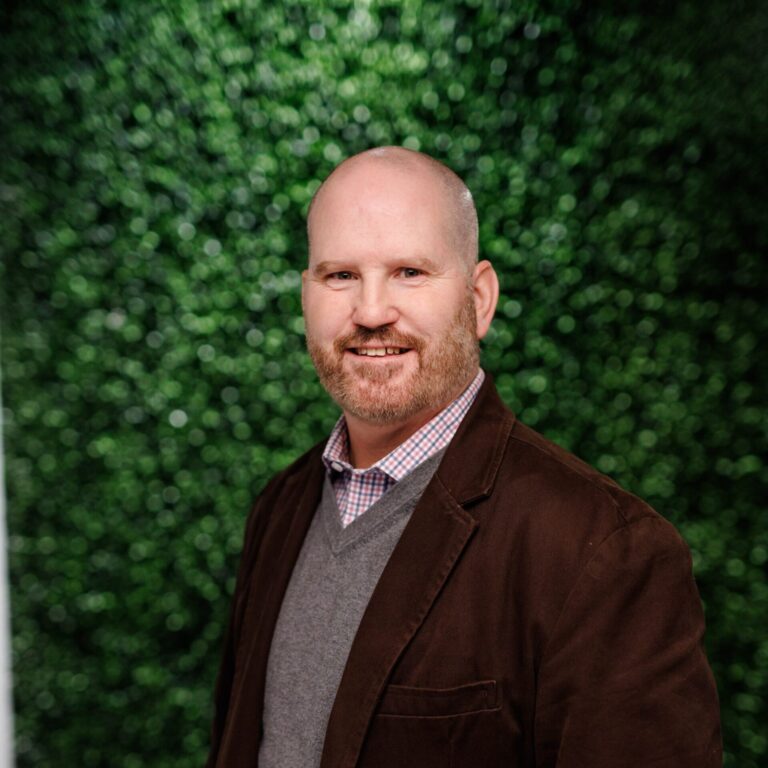When it comes to the Great Lakes, it’s all about balance.
A recent United States Geological Survey five-year report on Great Lakes Basin water availability says that jurisdictions must find balance between storage of surface water and groundwater in the system, flows of water through the system, and existing, sometimes competing, human and ecological uses of water.
But it’s hard to make those decisions without sufficient data. In February, Water Canada and Borden Ladner Gervais LLP gathered a group of experts to discuss some of the challenges surrounding the Great Lakes Basin. One resounding conclusion was that we just don’t have the information we need to properly manage our resources.

Data deficit
Ted Yuzyk, acting secretary of the International Joint Commission (IJC), is part of a team responsible for a two-phase study on the Upper Great Lakes. “One of the things we found most astounding is that here you have 20 per cent of the world’s fresh water, and you have no continuous flow gauging stations on the connecting channels and many tributaries,” he said. “When we had to look back and figure out what might have happened to the [St. Clair] river, we looked at disparate data sources—and if you don’t have reliable and comprehensive data, you have to do a lot of interpretation.”
In the first phase of the Upper Great Lakes Study, discerning the exact cause(s) of an observed 23-centimetre drop in Lakes Huron and Michigan compared to Lake Erie between 1962 and 2006 proved difficult. When the IJC released draft versions of this phase for public comment, Noah Hall of Wayne State University Law School criticized the findings on his Great Lakes Law blog.
“According to the IJC draft report, these three factors [climate change, the mid-1980s ice jam, and glacial isostatic adjustment], and not the dredging of the St. Clair River by the U.S. Army Corps of Engineers or other human physical disturbances, account for the declining lake levels,” he wrote.
It’s not that the dredging wasn’t a factor, explained Yuzyk—it’s that the data wasn’t available.
“One of the interesting things we found out is that something triggered a change in the mid-1980s. But that’s the same time most of the monitoring programs were cut or reduced. All of a sudden we had no information to use.”
To provide further explanation, Gail Krantzberg offered that Lake Erie is regulated by control structures, but lake levels in Michigan and Erie are not controlled. Krantzberg, director of McMaster University’s Centre for Engineering and Public Policy, said, “They fluctuate with climate, precipitation events, thermal events, ice cover, and other hydrologic parameters. They follow a natural cycle.”
“There’s no definitive scientific evidence that could completely support or refute that dredging had anything to do with it. These lakes will experience more shock because their levels are not regulated, ” said Krantzberg.
As a result of this study, the IJC has installed four continuous flow monitoring stations that now measure the flow in all of the connecting channels. The Governments of Canada and the United States have committed to maintaining the operation of these stations after the Study. These stations will be designated as International Gauging Stations and the data collected and disseminated based upon an agreed upon protocol.
“The [Upper Great Lakes] study is focusing on leaving a legacy of better science and monitoring,” said Yuzyk. “In the future, we’ll have better information and knowledge which will enable better decisions to be made.”

Ebb and flow
While Krantzberg explained regulatory fluctuation, Questerre’s Michael Binnion, whose company recently made a significant shale gas discovery in the St. Lawrence Lowlands, wondered if it’s not better to allow the Lakes to naturally fluctuate.
“Ecologically, it’s better that the lakes fluctuate—this makes for healthy wetlands,” said Krantzberg. “But the economic engine that the Great Lakes represents doesn’t function as predictably when the levels change unmanaged.” Historically, levels have been regulated to cater to the needs of the hydroelectricity and navigation industries.
But Paul Norris of the Ontario Waterpower Association said it’s not just about industry—cottagers and other Great Lakes residents are concerned with water level fluctuation. “People don’t want their water to go up and down anymore, notwithstanding that it may be ecologically advantageous.”
What is industry’s role?
As water levels rise and fall in the Great Lakes due to changes in demand and climate change, water consumption becomes a more visible issue—in the eyes of the public and industry.
“[The public] points to [hydropower operations] on the Ottawa River and say, ‘Oh, it must be the hydroelectric facility—they’re sucking all the water out!’ But with hydroelectric, water goes in and comes out,” said Norris.
“What you need to think about is how water is used and what it’s used for; how it’s replenished, and the impacts sector by sector,” he said. “Let’s look at consumptive versus non-consumptive to start.”
Like oil, Binnion’s sector faces very public scrutiny about its water withdrawals.
“People have a hard time conceptualizing big numbers,” he said. “We might do a slick water frac [hydraulic fracture, a method to remove natural gas from shale] for a well that might use 10-15 million litres of water—probably 50 per cent of that is consumptive and 50 per cent is treated or recycled. People look at those numbers and go ‘Wow—is there still going to be any water in the lake after that?’
But even if we were at full-field development, we’d still be using less water than a carwash or golf course. We’d be using less than one per cent of agricultural use, and one per cent [of what is] used by the pulp and paper industry.”
Industry does have point-source withdrawal rules to follow, said Binnion. “Whether or not they’re adequate is a different question. We follow the rules we’re given.”
Despite rules and regulations, when the public sees a number in the millions (or billions), it’s difficult to put it into context that makes sense in terms of their own lives.
“To the average person, billions of gallons makes it seem like the Great Lakes will be drained tomorrow,” said Yuzyk. “You can understand how it would be confusing to the public.”
Problems with quantity will only get worse as the Great Lakes population grows—and that spurt is imminent. Bill Humber with Seneca College discussed increasing migration to the Great Lakes region as water supplies dwindle in the U.S. southwest. “You can see a perfect storm combining human migration, population growth, and economic opportunity associated with water,” he said.
“What’s the impact of consumptive industries on lake levels? I think this question highlights the major challenge: we don’t know,” said Randy Christensen of Ecojustice, drawing parallels between public misconception and lack of data. He also drew attention to matters of scale. “The Great Lakes is not just a collection of lakes. The Basin is also a collection of smaller lakes, tributaries, and streams. When you’re talking about extraction or levels of pollution, it may be a drop in the bucket in terms of the Great Lakes, but if you’re talking about a tributary or stream, it could be devastating to take water at certain times of the year.”
BLG’s Adam Chamberlain sees consumption becoming a more urgent topic on the development agenda. “It’s part of the discourse of decision-making for development of infrastructure, but it wasn’t in the past. I’m not going to pretend to know whether current rules are adequate or not—they may not be—but it’s interesting that we’ve come from not addressing these things in industry to making it a matter for discussion.”
Chamberlain also considered the fact that not every industrial permit is used fully. “Many industries apply for permits that allow them lots of room to manoeuvre. Reporting requirements, while becoming more robust, are still not able to provide the kind of information needed [to properly calculate withdrawals].” He pointed to a power plant that could be seen from BLG’s boardroom, looking over Toronto’s Portlands. “There’s water consumed in these plants, but this one’s a peaker—it only runs when the temperature is really hot or cold. They need the permit, but there’s little ability to plan what they will actually consume over the courage of a year.”
It makes sense, then, that the National Roundtable on Economy and Environment’s water advisory panel is starting to look at which of the resource industries are most vulnerable to changes in water quantity. “We may soon have a clearer picture of which industrial users need to have the most rigorous conservation strategies, particularly for consumptive use,” said Krantzberg. “We have no idea how water-taking permits and actual withdrawals compare to the one per cent of water that is renewable each year. Are we close? Are we approaching one per cent? Nobody I’ve asked has an answer for that question—that’s frightening to me.”
“Even if we do get better numbers, the modelling is very complex. It’s going to be a challenge for regulators and academics to come to strong conclusions. The first step is to establish better baseline data,” said Chamberlain.
“Whatever kind of regulations we bring in, we’re going to use our best science and judgement—but they’re tough decisions,” agreed Joseph Comuzzi, Canadian chair of the IJC.
Quantity vs. quality
While the notion of quantity is a very real challenge, there should be an equal concern about quality, added Krantzberg. “People see the lake levels going up and down, but they can’t see the mercury inside the fish. They see flooding and lost boat habitat. You can’t see pharmaceuticals; you can’t tell that the fish at the end of the sewage treatment outfall is a male with ovaries.”
Binnion’s industry is also under fire over concerns about potential contamination. People are concerned, he said, about what’s in the flowback water from slick water fracs. He discussed a recent report that showed that frac water is easier to treat to standard than municipal wastewater, and that household water contained more contaminants. “Even if we do have an accidental [surface spill of flowback water], it still wouldn’t be as bad as what people purposefully put on their roads [chlorides to melt ice, for instance].”

The public eye
Throughout the course of the discussion, most experts lamented that communication to the public was a major challenge. How do we better communicate some of the Great Lakes challenges and findings?
Norris said the primary benefit is having a public who understands how water works. “We have to engage people in terms of where they live. If we can relate communities and sub-watersheds to this international prize called the Great Lakes Basin, I think we can start to make some headway.”
But it’s difficult to educate an empty room. “What is surprising and disappointing is that whenever we have public meetings, we draw relatively small crowds. The numbers are pitifully low—it’s a real challenge getting people to come out to public meetings,” said Yuzyk.
Krantzberg (whose email signoff thanks readers for “making the Lakes Great”) and Humber’s Regeneration Institute for the Great Lakes aims to change the way Great Lakes citizens think about their responsibilities.
Besides drawing crowds, Yuzyk said the other problem is the age gap. “We can’t draw out the young people.”
Krantzberg is trying to change that, too. “If you can get the youth passionate, that’s the wave of the future,” she said. She has a cautious optimism that some leaders will come from a Great Lakes student group that recently formed at McMaster University.
For Chamberlain, the answer is creating construction and proactive engagement processes. “People think that developers don’t want to hear from the public,” he said. “You have to be creative [to elicit input], whether it’s having representatives going door to door or holding meetings at times attractive to people.”
“It’s not just a communications challenge, it’s a governance challenge,” said Christensen. “What we need is a shift toward a model where you involve the public in governance and look at problems from a watershed level. If you give people that opportunity, they will respond.” WC
Participants
Michael Binnion,
Questerre Energy
Adam Chamberlain,
Borden Ladner Gervais LLP
Randy Christensen,
Ecojustice
Joseph Comuzzi,
International Joint Commission
Kerry Freek,
Water Canada (moderator)
Bill Humber,
Seneca College
Gail Krantzberg,
McMaster University
Paul Norris,
Ontario Waterpower Association
Ted Yuzyk,
International Joint Commission











